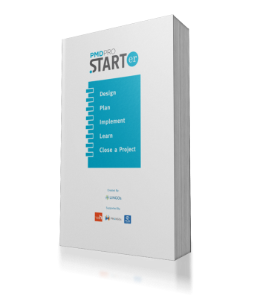Risk Register
I want to plan a project...
by managing risks to its success
LEVEL OF INVOLVEMENT: COMPLEX TOOL
This tool identifies possible project risks and helps you avoid possible problems down the road.
This tool identifies possible project risks and helps you avoid possible problems down the road.
Plan a project by managing risks to its success

WHAT is it?
This tool is a living document that helps you manage risks that could jeopardize the delivery of your project. By understanding these risks, you can put processes in place to limit or avoid a major crisis.
It’s a process that involves identifying risk categories that could affect your work, ranking these in order and applying a ‘risk score’ to each. If the score is too high for one of your risks, then a ‘risk reduction strategy’ needs to be applied.
Your output will be a table indicating the ‘risk categories’ in the left column, and outlining the risk itself, its status, score, and your response (who and when) in the top row headings. Allocating a person to manage each of the risks in a time-bound and accountable way is extremely important.
It’s a process that involves identifying risk categories that could affect your work, ranking these in order and applying a ‘risk score’ to each. If the score is too high for one of your risks, then a ‘risk reduction strategy’ needs to be applied.
Your output will be a table indicating the ‘risk categories’ in the left column, and outlining the risk itself, its status, score, and your response (who and when) in the top row headings. Allocating a person to manage each of the risks in a time-bound and accountable way is extremely important.
HOW do I use it?
Teamwork: To complete your risk register, get your team together to brainstorm all of the risks that your project could face. You will have already gained some insight into these risks during your project identification and design phases. Every project is unique, so take time to identify these.
In its project to reduce incidences of waterborne illness in the Delta River region, UNITAS identified 1) increased inflation, 2) cement shortages, and 3) unmotivated volunteers as potential risks to their project.
Risk to your project could involve political, legal, organizational, human, financial, technical or environmental considerations.
Management: The goal of risk management is not to eliminate risk altogether. It’s about being able respond if risk exceeds project tolerance levels. Risks with a high score will need to be managed and that risk reduced.
You may decide to avoid a risk by not doing something or doing something differently. This could involve moving to a different location because of insecurity, or in the case of UNITAS, deciding not to use volunteers for the health awareness campaign.
You could transfer a risk by shifting it to another project area or another party. The most common example of this is transferring the risk of vehicle damage to an insurance provider. In the case of UNITAS, this could involve negotiating a fixed price for cement to avoid price rises.
You could reduce or mitigate a risk so that it is acceptable. If UNITAS was concerned about the risk of theft because of the increase in cement prices, the team may consider increasing security systems at their warehouse. Or you may decide to accept some element of risk because you have assessed that it is reasonable. The UNITAS team may know that the project could be affected by late season rains, but they think that it’s a risk worth taking because of the urgency of reducing waterborne illness.
In its project to reduce incidences of waterborne illness in the Delta River region, UNITAS identified 1) increased inflation, 2) cement shortages, and 3) unmotivated volunteers as potential risks to their project.
Risk to your project could involve political, legal, organizational, human, financial, technical or environmental considerations.
Management: The goal of risk management is not to eliminate risk altogether. It’s about being able respond if risk exceeds project tolerance levels. Risks with a high score will need to be managed and that risk reduced.
You may decide to avoid a risk by not doing something or doing something differently. This could involve moving to a different location because of insecurity, or in the case of UNITAS, deciding not to use volunteers for the health awareness campaign.
You could transfer a risk by shifting it to another project area or another party. The most common example of this is transferring the risk of vehicle damage to an insurance provider. In the case of UNITAS, this could involve negotiating a fixed price for cement to avoid price rises.
You could reduce or mitigate a risk so that it is acceptable. If UNITAS was concerned about the risk of theft because of the increase in cement prices, the team may consider increasing security systems at their warehouse. Or you may decide to accept some element of risk because you have assessed that it is reasonable. The UNITAS team may know that the project could be affected by late season rains, but they think that it’s a risk worth taking because of the urgency of reducing waterborne illness.
WHEN do I use it?
You will need to continually revisit and update your Risk Register. As your project evolves, some risks will be resolved or diminish in importance. Others may surface and should be added to the register. Working in this way enables you to stay one step ahead of risks, addressing them BEFORE they become serious issues.
Who is involved?
You should involve your team(s) and other project stakeholders or peers with knowledge of the context within which your project operates.
Tips:
A risk MUST never go unrecognized, unmanaged or ignored – even in situations where some element of risk is acceptable.
Additional Resources
Download the additional resources and the Project DPro (PMD Pro) Pocket Guide

Supported & Developed by:
Shared by:
Users are free to copy/redistribute and adapt/transform
for non-commercial purposes.
© 2022 All rights reserved.




